This article was medically reviewed by Shari Forschen, NP, MA. Shari Forschen is a Registered Nurse at Sanford Health in North Dakota. Shari has worked in healthcare since 1996 and her expertise lies in acute care bedside nursing on a medical oncology floor. She received her degree from Medcenter one College of Nursing in 2003 and her Family Nurse Practitioner Masters from the University of North Dakota in 2014. Shari is a member of the American Nurses Association.
There are 12 references cited in this article, which can be found at the bottom of the page.
wikiHow marks an article as reader-approved once it receives enough positive feedback. In this case, 95% of readers who voted found the article helpful, earning it our reader-approved status.
This article has been viewed 132,393 times.
Triglycerides are a type of fat (or lipid) that exist in the blood and provide energy for the body. When you eat, your body converts any calories it doesn't need right away into triglycerides and stores them in your fat cells for later use.[1] Research is only really just beginning to understand triglycerides and how they impact the risk of developing heart disease as well as other conditions including various cancers.[2] Medications may be prescribed by your physician, but simple changes in your lifestyle may also help decrease the level of triglycerides in your body so that you can lower your risk of heart disease, heart attack and stroke.
Steps
Making Dietary Changes
-
1Cut back on sugar. Simple carbohydrates, such as sugar and foods made with white flour, can increase triglycerides. Generally if it's white, stay away. Lay off cookies, cakes, muffins, white pasta, white bread, candy, etc.
- High-fructose corn syrup is a serious culprit when it comes to high triglycerides, studies have shown. An abundance of fructose is bad news for your system, so avoid it whenever possible. Read food labels to see if the food you are about to eat contains this sugar.
- To fight sugar cravings, try grabbing a piece of fruit. Fruits are also high in sugar, but those are natural, rather than processed, sugars.
-
2Fight the bad fats. Eating a leaner diet and cutting down on the saturated fat and trans fat in your diet can improve your triglyceride levels. The American Heart Association recommends that people with high triglycerides monitor their fat intake closely; they should only be getting about 25 to 35 percent of their daily calories from fat, from the "good fats" to be more specific.
- Avoid fast food and most processed foods. These often contain partially hydrogenated fats (trans fats), which are extremely unhealthy. But if you live in the US, don't rely on packages that label their foods as free of trans fat. If a food contains less than half a gram of trans fat in a serving, it can be legally labeled trans fat-free. Even though this seems minuscule, negligible amounts can add up quickly if left unmonitored. You can tell that a food has trans fat in it (even if the label says there is none) if it lists partially hydrogenated oil in the ingredients.
- Avoid saturated fats, like those in animal products, such as red meat, butter, and lard.
Advertisement -
3Switch to healthy fats. Replace those bad fats with good fats, though you'll still need to eat even the good fats in moderation. Healthy fats include olive oil, nuts, and avocados.[3]
- Make an effort to make healthy substitutions, such as olive oil instead of butter in your cooking or a small handful of 10 to 12 almonds instead of a pre-packaged cookie for a snack.
- Polyunsaturated fats, unsaturated fats, monounsaturated fats, and omega-3 fatty acids are examples of healthy fats.
-
4Limit the cholesterol in your diet. Aim for no more than 300 milligrams (mg) of cholesterol a day if you're simply taking preventative measures. If you have heart disease, aim for less than 200 mg a day. Avoid the most concentrated sources of cholesterol, namely red meats, egg yolks and whole milk products. Check food labels to see how much you're eating makes up your daily recommended amount of cholesterol.
- Note triglycerides and cholesterol aren't the same thing. They are separate types of lipids that circulate in your blood. Triglycerides store unused calories and provide your body with energy, while cholesterol is used by your body to build cells and maintain certain hormone levels. Both triglycerides and cholesterol are unable dissolve in blood, which is when problems start occurring.[4]
- With a growing awareness of the problems of high cholesterol, more and more food companies are producing products with lower cholesterol. To be marketed as "low-cholesterol," the food has meet standards set by the government. Look for these options in stores.[5]
-
5Consume more fish. Eating more fish, which are high in omega-3s, can lower your triglyceride levels in a seemingly effortless way. Fish like mackerel, lake trout, herring, sardines, albacore tuna, and salmon are your best options because leaner varieties of fish don't have the same high levels of omega-3s.
- To reap the benefits of fish's triglyceride-lowering powers, the American Heart Association recommends that most people eat fish high in omega-3s at least twice a week.
- It may be hard to get enough omega-3s from food to help lower your triglycerides, so your doctor may recommend a supplement of fish oil. Fish oil capsules are widely available in drug stores and health food stores.[6]
-
6Maintain a healthy diet rich in fruits, vegetables, and whole grains. While you want to cut sugar, processed foods, and simple carbs, you'll want to fill your diet with whole grains and more fruits and vegetables. Maintaining a nutrient-rich diet will keep your mind and body healthy and thus contribute to your overall well-being.
- Choose whole-grain bread, whole-wheat pasta, and other grains such as quinoa, barley, oats, and millet.
- Eat a variety of fruits and vegetables every single day. A good way to get more fruits and vegetables at each meal is to make sure they comprise two-thirds of your plate.
Making Lifestyle Changes
-
1Limit your alcohol intake. Alcohol is high in calories and sugar and can increase triglyceride levels. Even small amounts of alcohol can raise your number. Some research has suggested that drinking more than one drink a day for women and two drinks a day for men can increase triglyceride levels significantly.
- Some people with very high triglycerides may need to cut out alcohol entirely.
-
2Read the packaging. At the supermarket, spend a few minutes reading nutrition labels. This can help you decide whether you should buy certain foods or leave them on the shelf. An activity that takes just 1 minute can save you loads of strife in the long run.
- If the label lists certain sugars in the first few ingredients, you should keep it on the shelf. Be on the lookout for brown sugar, high-fructose corn syrup, honey, molasses, fruit juice concentrates, dextrose, glucose, maltose, sucrose and syrup. These are all sugars, which can increase triglycerides.[7]
- One helpful tip when grocery shopping is to focus your shopping on the outside perimeter of the supermarket. This is where most of the fresh produce, grains, and meats are located. Processed and packaged foods tend to be located in the centre of the store so try to avoid those aisles as much as possible.
-
3Lose weight. If you're overweight, even losing just five to ten percent of your total body weight can help lower your triglycerides and cholesterol and reduce your risk of heart disease. Obesity leads to an increase in fat cells. People who maintain a healthy weight typically have normal (in other words, healthy) levels of triglycerides. Belly fat especially is a key indicator of high triglyceride levels.
- Whether or not someone is overweight or obese can be determined by using the body mass index (BMI), an indicator of body fatness. BMI is a person's weight in kilograms (kg) divided by the square of the person's height in meters (m). A BMI of 25 — 29.9 is considered overweight, while a BMI greater than 30 is considered obese.[8]
- To lose weight, reduce the number of calories you intake and increase the amount of exercise you do. This is the best way to lose weight. Always be sure to consult your physician and potentially also a registered dietitian before beginning any weight loss or diet-and-exercise program.
- You can also make a concerted effort to watch portion sizes and to eat slowly and stop when you're full.
- You can control how many pounds of weight you lose! You've probably already heard the number one rule of weight loss: you need to have a deficit of 3,500 calories. That sounds like a lot, but really, it's just burning 3,500 more calories than you eat, or 500 more calories than you eat in a week. Every week that you follow this, you could potentially lose a pound of fat!
-
4Exercise regularly. To see a reduction in your triglyceride levels, try to get at least 30 minutes of some form of exercise on most or all days of the week. Studies have shown that aerobic exercise (meaning exercise that gets your heart rate up to at least 70 percent of your target heart rate), sustained for an average of 20 – 30 minutes, will decrease your triglyceride level.[9] Take a brisk daily walk, join the pool or hit the gym to burn off those extra triglycerides.
- Obtain your target heart rate by subtracting your age from 220 and then multiplying it by .70. For example, if you are 20 years old, your target heart rate would be 140.
- Regular physical activity kills two birds with one stone; it boosts "good" cholesterol while simultaneously lowering "bad" cholesterol and triglycerides.
- If you don't have time to exercise for 30 consecutive minutes, try squeezing it in in small increments throughout the day. Take a short walk around the block, climb the stairs at work, or try sit-ups, yoga, or core workouts as you watch television at night.
Getting Medical Support
-
1Consult your physician. There's a lot of information and fancy scientific and medical language — for example, triglycerides, LDL cholesterol, HDL cholesterol, and so on — that can be very confusing. It's best to get clear, precise and up-to-date information from your doctor about your health and risk levels.
- The medical community still is unsure of exactly what triglyceride levels mean and signify for developing serious heart conditions. While we know that high triglyceride levels have been correlated with increased risk of developing heart disease, the relationship between lowered triglyceride levels and reduced heart disease risk is less clear. It's best to talk to your doctor to get the most recent and relevant information for your particular situation.[10]
-
2Know what's normal. According to the American Heart Association (AHA), a triglyceride level of 100 mg/dL (1.1 mmol/L) or lower is considered "optimal" for heart health. There's a scale you can consult to learn what "normal" levels of triglycerides actually means:[11] [12]
- Normal — Less than 150 milligrams per deciliter (mg/dL), or less than 1.7 millimoles per liter (mmol/L)
- Borderline high — 150 to 199 mg/dL (1.8 to 2.2 mmol/L)
- High — 200 to 499 mg/dL (2.3 to 5.6 mmol/L)
- Very high — 500 mg/dL or above (5.7 mmol/L or above)
-
3Ask your doctor about medication. For some people with high triglycerides, medicine may be the only quick-acting solution; however, doctors generally try to prescribe medication to lower triglyceride levels as a last resort since it can be complicated, particularly if you have other health or medical conditions. Your doctor will usually check for high triglycerides as part of a cholesterol test (sometimes called a lipid panel or lipid profile) before recommending any prescribed medications. You'll have to fast for nine to 12 hours (to lower your blood sugar) before blood can be drawn for an accurate triglyceride measurement. This is the only way to know if you're a candidate for medication. Here are are several medications that can improve triglyceride levels:[13]
- Fibrates, such as Lopid, Fibricor, and Tricor
- Nicotinic acid, or Niaspan
- High-doses of prescribed omega-3s, such as Epanova, Lovaza, and Vascepa
References
- ↑ http://www.mayoclinic.org/diseases-conditions/high-blood-cholesterol/in-depth/triglycerides/art-20048186
- ↑ H Humor, W Borena,K Rapp et al, Serum Triglyceride Concentration and Cancer risk in a Large Cohort in Austria, British Journal of Cancer 2009,101, 1202-1206
- ↑ http://www.mayoclinic.org/diseases-conditions/high-blood-cholesterol/in-depth/triglycerides/art-20048186?pg=2
- ↑ http://www.mayoclinic.com/health/triglycerides/CL00015
- ↑ http://www.mayoclinic.com/health/triglycerides/CL00015
- ↑ Maggie Covington, MD. Omega 3 Fatty Acids, American Family Physician July 1, 70 1 133-140
- ↑ https://my.clevelandclinic.org/health/articles/17583-triglycerides--heart-health
- ↑ http://www.cdc.gov/healthyweight/assessing/bmi/adult_bmi/index.html
- ↑ Eric Plaisance, Michael Mestek, A jack Mahurian, Postprandial Triglyceride response to Aerobic exercise and extended release Niacin, American Journal of Nutrition July 2008 Vol 88 no 1 30-37
About This Article
If you want to lower your triglycerides, you can begin by changing your diet. Try cutting down on sugary foods and refined carbohydrates, such as pasta and white bread. Instead of eating saturated fats like butter and red meat, replace them with healthy fats, which can be found in things like nuts and avocados. Another way to lower your triglycerides is by getting at least 20 minutes a day of aerobic exercise a day, like cycling or taking a brisk walk. To learn more from our Medical Review Board co-author, like when to consult with your doctor about triglycerides, keep reading the article!


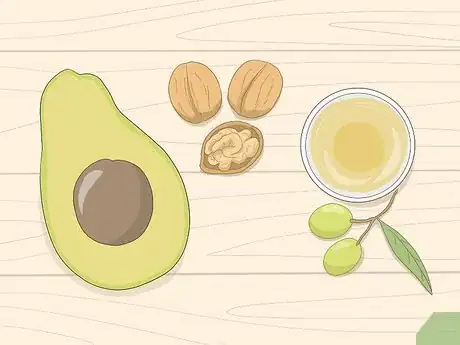


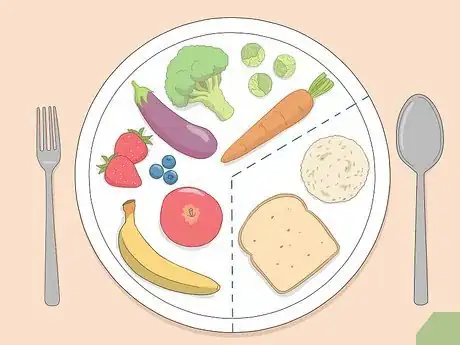

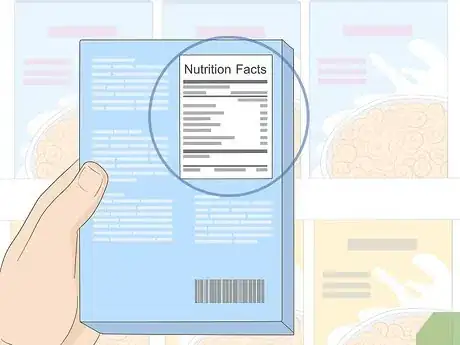
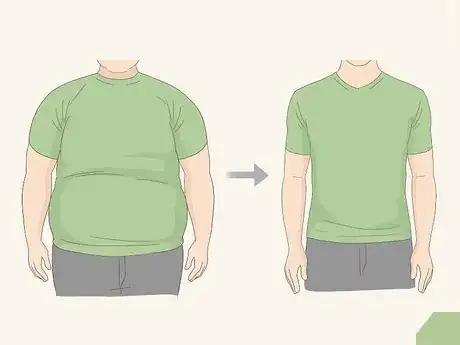

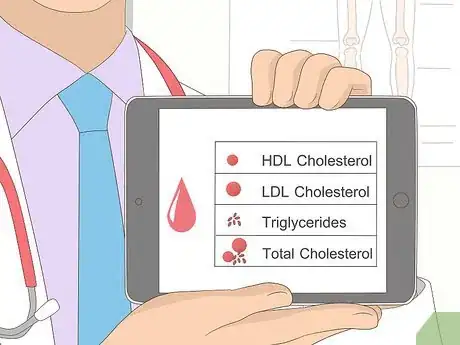


































































Medical Disclaimer
The content of this article is not intended to be a substitute for professional medical advice, examination, diagnosis, or treatment. You should always contact your doctor or other qualified healthcare professional before starting, changing, or stopping any kind of health treatment.
Read More...